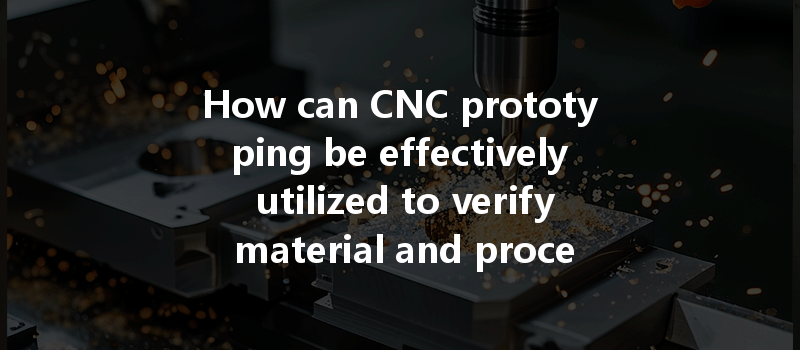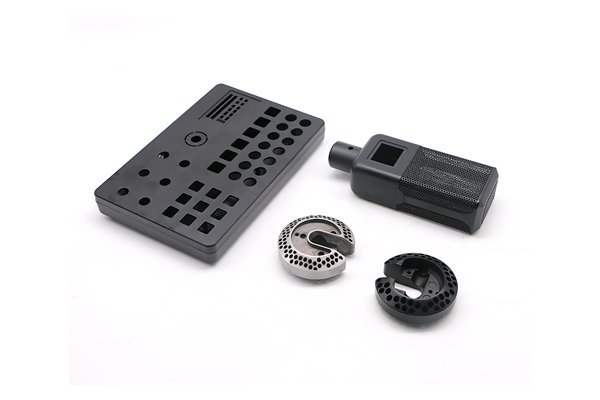Did you know that over 70% of manufacturers believe that prototyping significantly accelerates product development? This statistic highlights the growing importance of rapid prototyping in today’s competitive landscape. As businesses strive to shorten their time-to-market, the need for efficient and reliable prototyping methods has become crucial. One of the most effective methods for this purpose is Computer Numerical Control (CNC) prototyping. This article will delve into how CNC prototyping can be utilized to verify material and process selection in manufacturing, thereby ensuring product quality and reducing production costs.
Understanding CNC Prototyping
CNC prototyping involves the use of computer-controlled machines to produce precise, scalable prototypes from a variety of materials. Unlike traditional manufacturing techniques that may require substantial handwork and manual intervention, CNC machining automates the production process, resulting in higher accuracy and efficiency.
The Significance of Material Selection
Material selection plays a vital role in product performance and manufacturability. The right material not only enhances functionality but also influences factors such as cost, weight, and durability. With a multitude of materials available—from metals and plastics to composites—the challenge lies in choosing the best fit for specific applications.
Key Benefits of CNC Prototyping
The Process of CNC Prototyping
Step 1: Design and CAD Modeling
The initial step in CNC prototyping is the creation of a Computer-Aided Design (CAD) model. Software such as SolidWorks, AutoCAD, or CATIA are commonly used to create detailed, 3D representations of the desired part. Designers must consider not only the aesthetics and functionality but also the manufacturing implications related to material and process selection.
Step 2: Material Selection
Once the design is finalized, the next critical step is selecting the appropriate material. Factors influencing this choice include:
Engaging with material suppliers and conducting preliminary tests can provide insights into how well different materials perform under specific conditions.
Step 3: Prototyping with CNC Machines
After material selection, the next phase is preparing the CNC machine with the chosen material. This involves:
Step 4: Testing and Validation

Following the prototype creation, rigorous testing is essential to validate the performance of the selected material and processes. Various tests could include:
By avoiding potential failures at this stage, businesses can save costs related to rework and additional production.
Step 5: Iteration and Final Refinements
CNC prototyping encourages a cycle of iteration. Based on testing feedback, modifications might be needed. This analysis can lead to alterations in design, material choice, or production methods, ensuring the final product aligns with market expectations and functional requirements.
Case Studies of CNC Prototyping in Material Verification
Case Study 1: Aerospace Industry
In the aerospace sector, precision is paramount. A leading aerospace manufacturer utilized CNC prototyping to verify material specifications for their aircraft components. Initially, they experimented with aluminum alloys, conducting multiple tests on tensile strength and fatigue resistance. Following validation, they transitioned to a lightweight composite material that exhibited superior performance, ultimately reducing weight while maintaining structural integrity.
Case Study 2: Automotive Sector
An automotive company looking to innovate its vehicle parts decided to implement CNC prototyping. Initially, they faced issues with thermal expansion during the material selection process for engine components. By utilizing CNC prototyping, they were able to test different metals and adhesives rapidly, discovering a specific aluminum alloy that minimized thermal deformation, which contributed to improved engine performance.
Challenges in CNC Prototyping for Material Selection
While CNC prototyping reduces waste and speeds up production, the upfront investment in CNC machinery and skilled personnel can be significant. Businesses need to weigh these costs against potential savings in production and material waste.
Understanding CNC technology and material properties requires specialized skills. Manufacturers must invest in training or consult industry experts to ensure proper execution of prototypes.
Not all materials are compatible with CNC machining. Some composites may require specialized equipment, while others may not offer the mechanical properties needed for the application.
Future Trends in CNC Prototyping
CNC prototyping acts as a vital bridge facilitating effective material and process selection in manufacturing. By leveraging precise and versatile CNC technology, manufacturers can not only create high-quality prototypes but also verify the selected materials and processes early in the production cycle, reducing costs and improving overall product quality.
It’s important to remember that an informed choice in these early stages can lead to substantial long-term benefits. As industries continue to evolve, embracing CNC prototyping will remain essential for maintaining competitiveness in the global market.
Reflecting on this blog, consider the significant role CNC prototyping plays in your manufacturing processes. The insights shared here may not only optimize your production but also enhance your innovation capabilities, ensuring that you keep pace with future industry demands. Now is the time to leverage CNC technology to its fullest extent, optimizing not just your designs but the materials that will bring them to life.






